Review for Death Note: Complete Series And Ova Collection
Introduction
It’s been a learning curve when it comes to anime on Blu-ray, for both fans and distributors alike. Blu-ray is a high definition format, and you would think that only anime created at high definition would be best served by that format. For the anime industry, that means anime made up to the late nineties, when it was traditionally created using cel and paint, photographed on 16 or 35mm film, or anime made after 2006 and 2007, when animators started to digitally create anime in high definition. In between these dates, television anime was being made digitally, but directly for the NTSC format at 480 lines of definition. That’s fine for US DVD, passable for UK PAL DVD, but for Blu-ray, that means an upscale, and you would be forgiven for thinking that it would really just look the same as the DVD, just more expensive.
Sure enough, the early attempts to put old shows on Blu-ray were just that, an upscale of the DVD masters at best, or at worst artificially post-processed to make them look faux-HD, but resulting in a lot of DNR, smearing, and actual loss of detail to get things looking sharper. But the truth of the matter is that DVD masters aren’t the same as the original source animation. For one thing DVD introduced a lot of compression to squeeze six or seven episodes into 9GB of space. The second thing is that the colour palette on DVD is limited in comparison to Blu-ray, so you don’t always see the colours that the creators intended. Some companies started putting out SD digipaint anime scaled up to HD re-mastered from the original source, and the results were astounding. While not HD in the slightest, suddenly colours were richer, 24fps progressive animation with zero visible compression resulted in clear imagery with much more in the way of detail, and the animation was smooth in a way that interlaced NTSC could never manage.
It all depends on the quality of the upscale of course. It’s not just a simple matter of zooming in. Line detail has to be finessed to avoid aliasing, while gradation of colour has to be smoothed out to eliminate macro-blocking. This is usually done automatically, by an algorithm such as those in your TV that scale up SD channels to HD displays. The trick is getting it right without losing detail to DNR and smearing. In the UK we get the added bonus of replacing PAL DVDs either with 4% speed-up and higher-pitched or pitch corrected audio, or NTSC-PAL standards converted discs with ghosting and judder. Then there’s the aural joy of lossless audio. Get it right and you can retire your DVDs, as I did for Baccano!, Code Geass, and Black Lagoon. Get it wrong and you’ll be holding onto your DVDs, as I did for Gankutsuou and FLCL. Let’s see where the Death Note Blu-rays end up.
Ryuk is a Shinigami, a Death God. The Shinigami exist to shepherd souls across to the other side, and where convenient give them a helping hand. This is done by means of the Death Note, a book in which the Shinigami write the name of the soon to be deceased, with an optional cause of death, and that prediction duly come to pass. But Ryuk is bored. Being a Shinigami isn’t all that it used to be, and his peers just spend eternity sitting around gambling or sleeping. He needs a little entertainment.
Light Yagami is a high school student; actually he is an exemplary high school student, fiercely intelligent and regularly scoring the highest grades in Japan. The world could be his oyster, except that with nothing to challenge him, he is bored. That’s until the day that the Death Note ‘accidentally’ falls into his school grounds. Initially sceptical of a prank, or a sick joke, he’s about to dismiss it from his mind, but curiosity urges him to pick it up, and try it out. He stunned when it actually works. Soon he has a plan to clean up the criminal, the sick and depraved, and remove them from the world, crafting his ideal society, a society over which he will have the power of a god.
L is the world’s greatest detective, an enigmatic figure who stays out of the limelight, his raven-haired appearance and eccentricities setting him apart from his peers, but he can solve cases that leave others baffled. For L and the authorities, murder is murder, and a sudden rash of unexplained deaths among criminals surely must be connected. The regular police are reluctant to hunt someone who can kill at whim and from a distance, but for L even the supernatural is a challenge to be relished. He comes to Japan to hunt the ruthless vigilante now come to be known as ‘Kira’, and he gathers a small group of determined investigators to help, among them Light’s own policeman father, Inspector Souichiro Yagami. Soon it is Light who is being hunted.
37 episodes of Death Note, plus the OVAs are presented across 6 Blu-ray discs.
Disc 1
1. Rebirth
2. Confrontation
3. Dealings
4. Pursuit
5. Tactics
6. Unraveling
7. Overcast
Disc 2
8. Glare
9. Encounter
10. Doubt
11. Assault
12. Love
13. Confession
14. Friend
Disc 3
15. Wager
16. Confession
17. Execution
18. Ally
19. Matsuda
20. Makeshift
21. Performance
Disc 4
22. Guidance
23. Frenzy
24. Revival
25. Silence
26. Renewal
27. Abduction
28. Impatience
Disc 5
29. Father
30. Justice
31. Transfer
32. Selection
33. Scorn
34. Vigilance
35. Malice
Disc 6
36. 1.28
37. New World
Picture
Death Note is over ten years old now. When I originally reviewed it, I said. “The character and world designs are excellent, and the level of detail and fluidity of motion speaks to a high investment in the animation. The look of the show suits the story well, with the Shinigami realm a suitably dark and creepy otherworld, while the city gets a cold impersonal feel, with everything in pastels and understated. As you would expect from a show with such dark themes, there’s plenty use of shadows and moody lighting. It makes for a rewarding viewing experience.”
Much of that is still valid, but time and repeat viewings have taken their toll, with the static, talky nature of the show beginning to overwhelm, and the quality of the line-art no longer feeling consistent or all that detailed. It feels like a mid-tier Madhouse show, and when you think that this was around the time that they were putting out shows like Black Lagoon, Claymore, Beck and Paranoia Agent, suddenly Death Note doesn’t feel quite so polished.
That said, Death Note certainly gets a spruce up on Blu-ray. You have to remember that we got Death Note on DVD back when every anime got an NTSC-PAL standards conversion, and wound up looking worse than the US NTSC releases, so just getting the show at the correct frame rate, without ghosting is already going to be a step up. But Death Note gets a worthy upscale to 1.78:1 widescreen 1080p format, and given the vividness, the rich and lush life to the colour palette, they must have gone back to the source material rather than the DVD masters. Death Note looks fantastic, the line art is smooth, the detail levels are as good as you can hope to get from an upscale, without significant artificial filtering or sharpening, and there is no compression visible at all. The only snag will be the digital banding, but you have to expect that from an upscale. There is still the rare moment of judder over pans and scrolls, but this is a very pleasant viewing experience in high definition.
The images in this review were kindly supplied by Manga Entertainment.
Sound
You have a choice of PCM 2.0 English and Japanese, with optional translated subtitles and a signs track. You won’t get any complaints from me when it comes to the English dub, which is cast very well. All the voices suit their characters, and the performances live up to the hype surrounding the anime. Of course my preference as always is for the original language track, and there were no problems here either. The theme tunes to Death Note, especially the second set induce me to make use of the skip button on my remote. The incidental music on the other hand is really quite notable, taking a leaf from Danny Elfman when it comes to spooky and quirky, and certainly suits the bizarre Ryuk character down to a T.
The problem that we have here is that Manga Entertainment authored these discs here locally, and the subtitles are to their usual insufficient standard. Once again, they can’t show screen captions and dialogue simultaneously, and have instead merely inserted the text translations into the dialogue subtitle stream. You can differentiate them more easily than usual, as the text translations are in all capitals, but once again, where there is screen text and dialogue, things flash by a little too fast to read. The theme song subtitle translations are on the full subtitle track only. You won’t get them if you watch the English dub. It also appears that there are no signs only translations on the two Relight movies.
Extras
Nothing... except the OVAs.
The discs boot to animated menus which are slow to navigate. The episodes have the Japanese credit sequences, and there are no translated credit reels, or credit screens. One thing I haven’t seen before are the sponsor bumpers at the end of each episode. It’s just a still image and a burst of music, where TV stations usually list the local sponsors for the series.
On disc 6 you get the two digest movies...
OVA 1 – Relight: Visions of a God (130:11)
OVA 2 – Relight : L’s Successors (93:27)
As I had just seen the series in its entirety, I chose not to watch the digest movies, other than to check that they were there, with the same specifications as the series (except the lack of a signs only track).
So all of the extras that were on the DVDs have been stripped.
Conclusion
Don’t throw away the DVDs. This is not a double-dip situation where you’re replacing your collection. You’re only supplementing it with better audio visual specs, and slightly awkward subtitling. If Manga were smart, they would have bundled the Blu-ray with the DVDs as a combo release, so newcomers to the show could also partake of the audio commentaries, English and Japanese featurettes, art galleries, and promo videos that are missing from the Blu-ray. Here’s the kicker; Viz Media who recently released Death Note on Region A locked Blu-ray in the US, included all of these extra features on their Blu-ray collection. I have to admit to being disappointed at the Manga release, with the only extra features being the most redundant of the lot, a couple of digest movies which are pointless after watching the series. They’re also not very good.
So what about the series itself? If you want my detailed opinion of the episodes, and the series, you can find my reviews elsewhere on this site, while Stuart McLean wrote a great piece about the series as a whole when Manga released their complete collection DVD. But if you’re a fan of anime, and you have never seen Death Note before, you must watch this series. It’s one of those epoch defining shows, like Sailor Moon, Full Metal Alchemist, and Cowboy Bebop, a show that is a signpost for anime fandom, making the anime industry pause, and re-evaluate what it’s doing, most likely change direction as well. Death Note offers a great concept, and it delivers it in a character driven, psychological drama that is a far sight different from the usual shonen action tropes.
It’s not perfect. While it is the mind-games between Light Yagami and L that enthral, light up the screen, and drive the plot, the series strays from this central focus by introducing the Misa Amane character, who has the effect of somewhat weakening the story. It’s not a fatal flaw, and after a faltering start the Misa character does become a third vertex of a triangle with Light and L at the other extremes. It’s the usual problem of popular manga syndrome that really handicaps this show. Once you have a popular manga, the desire for more from its readers requires extending and convoluting the plot. The story really should have stuck to the Light vs. L dynamic, and concluded with these two characters as the central focus. But after L comes Near and Mello, and as foes for Light Yagami, they are a pale, repetitive shadow of L. The series really does go off the rails during their tenure, but thankfully it’s less than a third of the whole run, and Death Note really pulls things back together for its final two episodes, perhaps the best conclusion ever given to an anime.
If you’ve never seen Death Note before, and you are an anime fan, I’ll say it again, you simply have to watch this show. So stop reading here and go watch it.
...
...
...
Because now I’m going to speak from the perspective of someone who has just watched Death Note for the fifth time. Death Note is not that good! The re-watch value of this show is abysmal. I’d say that you can watch it maybe twice before the rot starts setting in. Death Note is the anime equivalent of Event TV, it’s the Lost, the 24, the nu-Doctor Who of the anime world, where you just get on the ride and hold on for dear life, marvelling at the twists and turns as they occur, just taking the show at face value and revelling in its apparent brilliance. The last thing you should do is devote any thought to the show, you shouldn’t try and figure it out. The minute you do that, you’ll start noticing plot holes, loose threads, and should you tug on one, the whole tapestry of the story will just fall apart.
So understand this before watching the show. Death Note takes place in a universe where common sense and reality does not apply. This is a world where a genius student can talk to his ‘invisible’ friend about taking over the world, laughing like a megalomaniac in his bedroom, and no-one else in the house can hear him. This is a world where a seasoned, former FBI agent, actually takes a 17-year old high school student seriously regarding a serial homicide case. Once you start contemplating the things that happen in Death Note, they become more and more untenable. The trouble is that re-watching the show invites contemplation. You can’t enjoy it like the first time thrill ride again.
This is where it becomes clear that the writers went at the show like a plate-spinning act. Each new twist, each new revelation is the equivalent of adding another plate. It’s easy at first, just a couple of plates in motion, you can concentrate on the story, and it makes sense, in its own worldview. Then the story develops with more twists and turns, they add more plates, until by the end, there are so many plates spinning that if you concentrate on one, they all fall down. It is so easy to pick up an illogical plot point the second or third time around that the show just doesn’t stand up. For instance there is a six-year time skip in the story where nothing much happens. It basically picks up where it left off, letting Near and Mello grow to maturity to face off against Light, but the Japanese investigation into Kira hasn’t done a thing in those six years.
This is probably the last time that I’ll watch Death Note in its complete form. If I ever do watch it again, I’ll make sure to stick to the first two-thirds where Light faces off against L, and then skip to the final two episodes for the conclusion. I’m almost ashamed to say that this time around, I fell asleep constantly during the Mello and Near episodes. You do get improved video and audio with this collection, but the subtitling is less impressive, and the lack of extra features means that you can’t ditch those DVDs. These flaws and the lack of re-watch value make me mark it down.



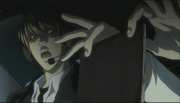


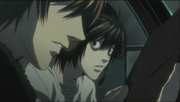
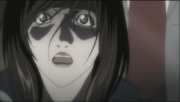








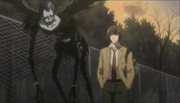

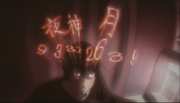

































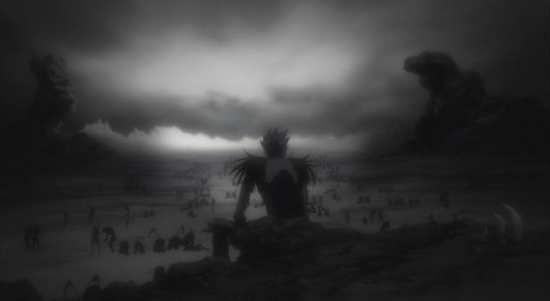








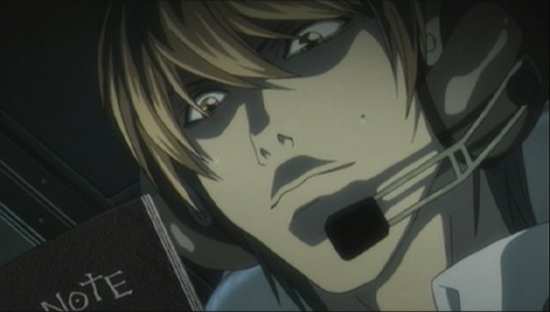










Your Opinions and Comments
Be the first to post a comment!